NASA Astronauts And Satellites Capture Breathtaking Images Of An Awakening Volcano From Space










NASA Astronauts And Satellites Capture Breathtaking Images Of An Awakening Volcano From Space
“Volcanoes are some of the most fascinating but also dangerous and deadly natural disasters. Fortunately, with appropriate monitoring, they’re one of the most easily mitigated classes of disasters as well. There are approximately 1,500 potentially active volcanoes on Earth at any time, which doesn’t include undersea volcanoes that have not reached the surface or inactive ones that might surprise us.
Only by continuously monitoring the entire Earth at the appropriate resolutions and cadences can we hope to truly minimize the risk to human life and property. Attempts to cut back on this endeavor harm and endanger us all, while an awareness and appreciation for what Earth observing brings us is our greatest asset. May the beauty of these pictures point the way to the most important truth: that comprehensive knowledge and more information are absolutely key to optimally navigating the challenges of being human on our living planet Earth.”
Just a few days ago, on June 22, 2019, a volcano that hadn’t erupted in nearly a century suddenly sprang to life, belching out waves of ash and volcanic gas high into the stratosphere and posing severe threats to nearby life. But far more at-risk were airplanes, which routinely fly through the region where volcanic ash particles were spewed by this eruption. Due to our full suite of Earth observatories, with an assist from astronauts aboard the International Space Station and ground-based monitoring, we were able to minimize the danger and avoid significant damage. Without NASA’s commitment to Earth monitoring, a commitment that’s continually fighting off attempted cuts, mitigating the risks of volcanic eruptions would be hamstrung by humanity’s greatest danger: willful ignorance.
Come take a look at the spectacular story of the recent eruption of Raikoke volcano, and learn why Earth observing is so important in the process!
More Posts from Ocrim1967 and Others

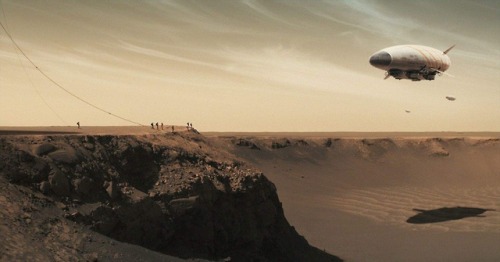
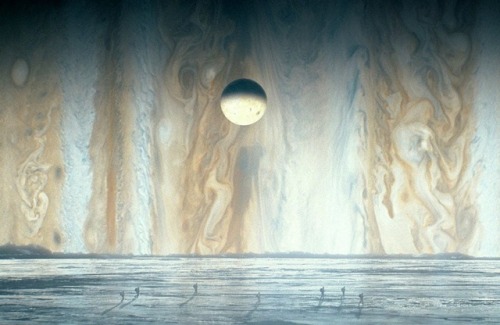

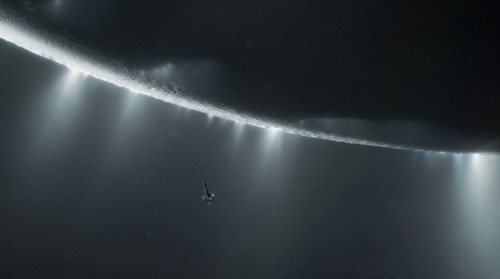
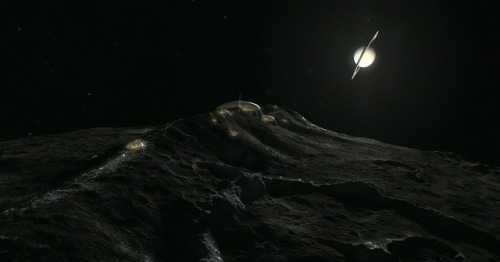
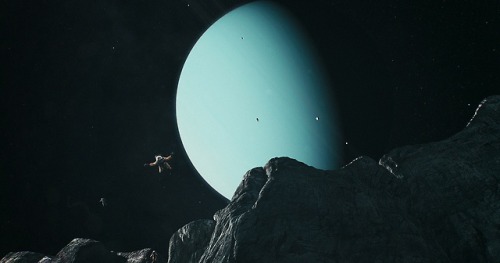
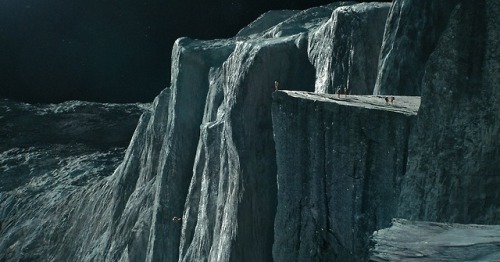

Will we one day explore the worlds of our solar system? How long will this take?
We have a diversity of worlds in our solar system. Majestic places…
Imagine being able to visit Mars and its hostile climate. Imagine being able to visit the moons of Jupiter, observe Io: the volcanic moon, Europa, the frozen moon and Ganymede a moon larger than Mercury itself and that has its own magnetic field. Imagine visiting the moons of Saturn and maybe passing close to your rings… Imagine orbiting or floating through Titan’s atmosphere and closely watching its lakes and seas of methane and liquid ethane. Imagine getting to know the geysers of Enceladus, the valleys of Tethys, and the craters of Mimas… Imagine being able to see the moons of Uranus and have a view of Verona Rupes, the largest cliff of the solar system, located in Miranda. Imagine being able to be in Triton and to be able to observe the cold and azualdo Neptune in the sky…










Ten Solstice Facts That Everyone Should Know
“9.) The solstices are neither the hottest nor coldest days of the year. This one is actually very specific to Earth: the hottest times of the year typically correspond to approximately 6 weeks after the summer solstice, and approximately 6 weeks after the winter solstice. Other planets don’t have this same phenomenon for one very important reason: they don’t have the majority of their surfaces covered in liquid water.
The oceans themselves, being composed of large quantities of water and containing approximately 1,000 times the mass of Earth’s atmospheres, contain a tremendous amount of heat, and are slow to change their temperatures. We might receive more (or less) energy from the Sun on the summer (or winter) solstices, but the oceans require time to heat up or cool down. Global average temperature extremes, therefore, usually occur in early August and February, rather than at the June and December solstices.”
The solstice, Latin for the Sun standing still in the sky, occurs whenever the Earth’s axial tilt reaches a maximum relative to the Earth’s orbital plane around the Sun. With a tilt of 23.5 degrees, but a tilt that’s independent of our elliptical orbit around the Sun, many surprising and counterintuitive facts arise.
Want to know as many of them as possible? Come get this remarkable and fascinating list of educational facts on this year’s solstice: June 21, 2019!
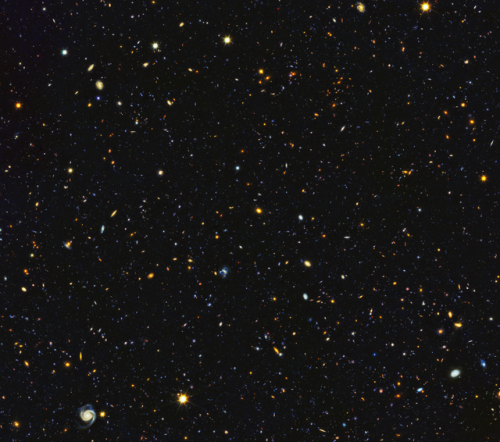
Astronomers have just assembled one of the most comprehensive portraits yet of the universe’s evolutionary history, based on a broad spectrum of observations by the Hubble Space Telescope and other space and ground-based telescopes. In particular, Hubble’s ultraviolet vision opens a new window on the evolving universe, tracking the birth of stars over the last 11 billion years back to the cosmos’ busiest star-forming period, about 3 billion years after the big bang. This photo encompasses a sea of approximately 15,000 galaxies — 12,000 of which are star-forming — widely distributed in time and space. This mosaic is 14 times the area of the Hubble Ultra Violet Ultra Deep Field released in 2014.
Credits: NASA, ESA, P. Oesch (University of Geneva), and M. Montes (University of New South Wales)

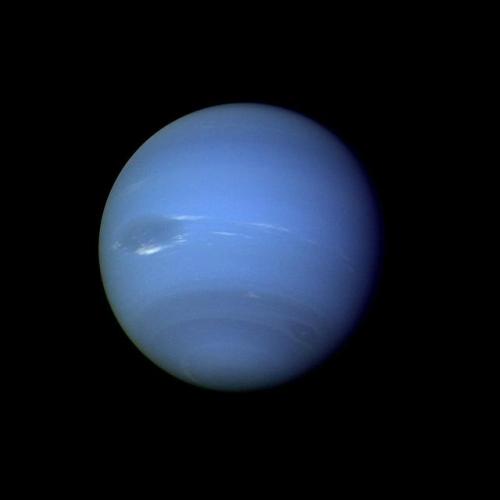
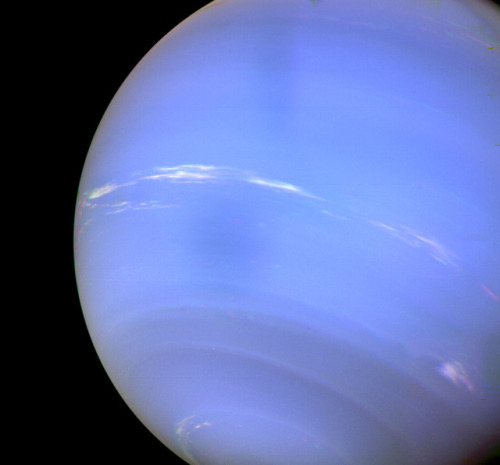
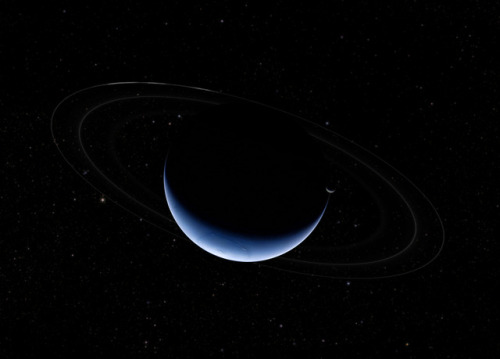
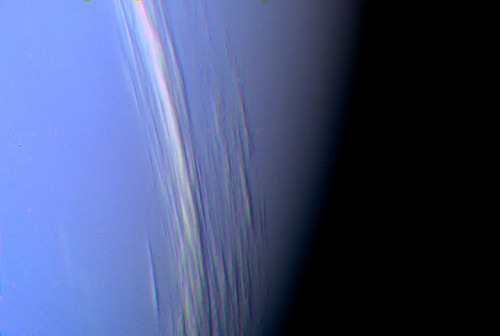
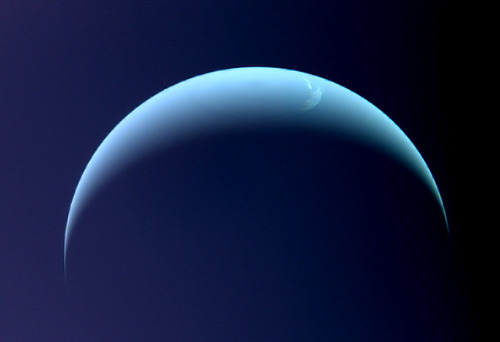
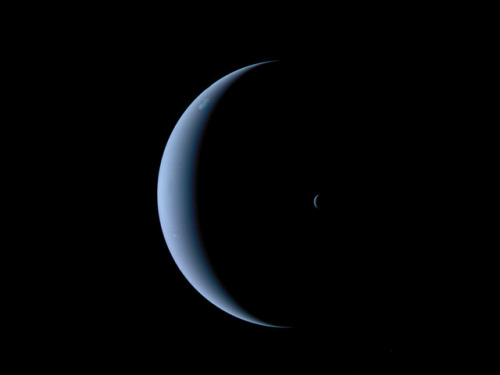
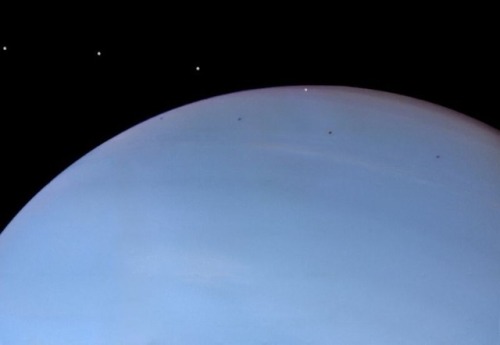
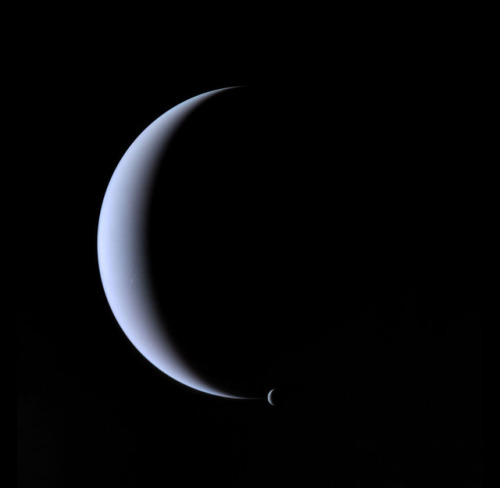
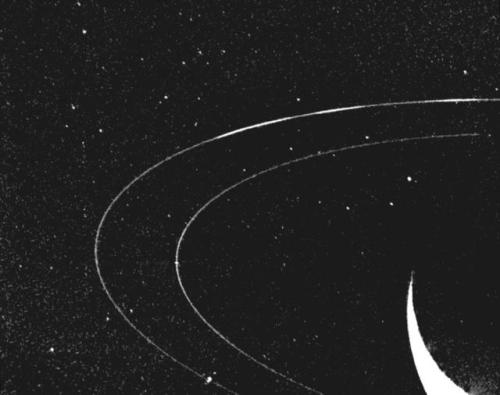
Neptune ♆
On this day in 1846 was discovered the planet Neptune.
The ice giant Neptune was the first planet located through mathematical predictions rather than through regular observations of the sky. (Galileo had recorded it as a fixed star during observations with his small telescope in 1612 and 1613.) When Uranus didn’t travel exactly as astronomers expected it to, a French mathematician, Urbain Joseph Le Verrier, proposed the position and mass of another as yet unknown planet that could cause the observed changes to Uranus’ orbit. After being ignored by French astronomers, Le Verrier sent his predictions to Johann Gottfried Galle at the Berlin Observatory, who found Neptune on his first night of searching in 1846. Seventeen days later, its largest moon, Triton, was also discovered.
Neptune is invisible to the naked eye because of its extreme distance from Earth. Interestingly, the highly eccentric orbit of the dwarf planet Pluto brings Pluto inside Neptune’s orbit for a 20-year period out of every 248 Earth years. Pluto can never crash into Neptune, though, because for every three laps Neptune takes around the Sun, Pluto makes two. This repeating pattern prevents close approaches of the two bodies.
Nearly 4.5 billion kilometers (2.8 billion miles) from the Sun, Neptune orbits the Sun once every 165 years.
Uranus’ blue-green color is also the result of atmospheric methane, but Neptune is a more vivid, brighter blue, so there must be an unknown component that causes the more intense color.
Despite its great distance and low energy input from the Sun, Neptune’s winds can be three times stronger than Jupiter’s and nine times stronger than Earth’s.
Winds on Neptune travel faster than the speed of sound.
In 1989, Voyager 2 tracked a large, oval-shaped, dark storm in Neptune’s southern hemisphere. This “Great Dark Spot” was large enough to contain the entire Earth.
Neptune has five known rings. Voyager 2’s observations confirmed that these unusual rings are not uniform but have four thick regions (clumps of dust) called arcs. The rings are thought to be relatively young and short-lived.
Neptune has 14 known moons, six of which were discovered by Voyager 2.
Triton, Neptune’s largest moon, orbits the planet in the opposite direction compared with the rest of the moons, suggesting that it may have been captured by Neptune in the distant past.
To know more about the planet Neptune click here and here.
Images credit: NASA/JPL- Caltech (some images processed by Kevin M. Gill)
10 Steps to Confirm a Planet Around Another Star
So you think you found an exoplanet – a planet around another star? It’s not as simple as pointing a telescope to the sky and looking for a planet that waves back. Scientists gather many observations and carefully analyze their data before they can be even somewhat sure that they’ve discovered new worlds.
Here are 10 things to know about finding and confirming exoplanets.

This is an illustration of the different elements in our exoplanet program, including ground-based observatories, like the W. M. Keck Observatory, and space-based observatories like Hubble, Spitzer, Kepler, TESS, James Webb Space Telescope, WFIRST and future missions.
1. Pick your tool to take a look.
The vast majority of planets around other stars have been found through the transit method so far. This technique involves monitoring the amount of light that a star gives off over time, and looking for dips in brightness that may indicate an orbiting planet passing in front of the star.
We have two specialized exoplanet-hunting telescopes scanning the sky for new planets right now – Kepler and the Transiting Exoplanet Survey Satellite (TESS) – and they both work this way. Other methods of finding exoplanets include radial velocity (looking for a “wobble” in a star’s position caused by a planet’s gravity), direct imaging (blocking the light of the star to see the planet) and microlensing (watching for events where a star passes in front of another star, and the gravity of the first star acts as a lens).
Here’s more about finding exoplanets.

2. Get the data.
To find a planet, scientists need to get data from telescopes, whether those telescopes are in space or on the ground. But telescopes don’t capture photos of planets with nametags. Instead, telescopes designed for the transit method show us how brightly thousands of stars are shining over time. TESS, which launched in April and just began collecting science data, beams its stellar observations back to Earth through our Deep Space Network, and then scientists get to work.

3. Scan the data for planets.
Researchers combing through TESS data are looking for those transit events that could indicate planets around other stars. If the star’s light lessens by the same amount on a regular basis – for example, every 10 days – this may indicate a planet with an orbital period (or “year”) of 10 days. The standard requirement for planet candidates from TESS is at least two transits – that is, two equal dips in brightness from the same star.

4. Make sure the planet signature couldn’t be something else.
Not all dips in a star’s brightness are caused by transiting planets. There may be another object – such as a companion star, a group of asteroids, a cloud of dust or a failed star called a brown dwarf, that makes a regular trip around the target star. There could also be something funky going on with the telescope’s behavior, how it delivered the data, or other “artifacts” in data that just aren’t planets. Scientists must rule out all non-planet options to the best of their ability before moving forward.

5. Follow up with a second detection method.
Finding the same planet candidate using two different techniques is a strong sign that the planet exists, and is the standard for “confirming” a planet. That’s why a vast network of ground-based telescopes will be looking for the same planet candidates that TESS discovers. It is also possible that TESS will spot a planet candidate already detected by another telescope in the past. With these combined observations, the planet could then be confirmed. The first planet TESS discovered, Pi Mensae c, orbits a star previously observed with the radial-velocity method on the ground. Scientists compared the TESS data and the radial-velocity data from that star to confirm the presence of planet “c.”
Scientists using the radial-velocity detection method see a star’s wobble caused by a planet’s gravity, and can rule out other kinds of objects such as companion stars. Radial-velocity detection also allows scientists to calculate the mass of the planet.

6. …or at least another telescope.
Other space telescopes may also be used to help confirm exoplanets, characterize them and even discover additional planets around the same stars. If the planet is detected by the same method, but by two different telescopes, and has received enough scrutiny that the scientists are more than 99 percent sure it’s a planet, it is said to be “validated” instead of “confirmed.”

7. Write a paper.
After thoroughly analyzing the data, and running tests to make sure that their result still looks like the signature of a planet, scientists write a formal paper describing their findings. Using the transit method, they can also report the size of the planet. The planet’s radius is related to how much light it blocks from the star, as well as the size of the star itself. The scientists then submit the study to a journal.

8. Wait for peer review.
Scientific journals have a rigorous peer review process. This means scientific experts not involved in the study review it and make sure the findings look sound. The peer-reviewers may have questions or suggestions for the scientists. When everyone agrees on a version of the study, it gets published.
9. Publish the study.
When the study is published, scientists can officially say they have found a new planet. This may still not be the end of the story, however. For example, the TRAPPIST telescope in Chile first thought they had discovered three Earth-size planets in the TRAPPIST-1 system. When our Spitzer Space Telescope and other ground-based telescopes followed up, they found that one of the original reported planets (the original TRAPPIST-1d) did not exist, but they discovered five others –bringing the total up to seven wondrous rocky worlds.

10. Catalog and celebrate – and look closer if you can!
Confirmed planets get added to our official catalog. So far, Kepler has sent back the biggest bounty of confirmed exoplanets of any telescope – more than 2,600 to date. TESS, which just began its planet search, is expected to discover many thousands more. Ground-based follow-up will help determine if these planets are gaseous or rocky, and possibly more about their atmospheres. The forthcoming James Webb Space Telescope will be able to take a deeper look at the atmospheres of the most interesting TESS discoveries.
Scientists sometimes even uncover planets with the help of people like you: exoplanet K2-138 was discovered through citizen scientists in Kepler’s K2 mission data. Based on surveys so far, scientists calculate that almost every star in the Milky Way should have at least one planet. That makes billions more, waiting to be found! Stay up to date with our latest discoveries using this exoplanet counter.
Make sure to follow us on Tumblr for your regular dose of space: http://nasa.tumblr.com.

The Planets and their respective sizes compared to our Sun.

Curious about how to send research to the International Space Station or how to get involved with NASA missions as a college student? Ask our experts!
Through our Student Payload Opportunity with Citizen Science, or SPOCS, we’re funding five college teams to build experiments for the International Space Station. The students are currently building their experiments focusing on bacteria resistance or sustainability research. Soon, these experiments will head to space on a SpaceX cargo launch! University of Idaho SPOCS team lead Hannah Johnson and NASA STEM on Station activity manager Becky Kamas will be taking your questions in an Answer Time session on Thurs., June 3, from 12-1 p.m. EDT here on our Tumblr! Make sure to ask your question now by visiting http://nasa.tumblr.com/ask. Hannah Johnson recently graduated from the University of Idaho with a Bachelor of Science in Chemical Engineering. She is the team lead for the university’s SPOCS team, Vandal Voyagers I, designing an experiment to test bacteria-resistant polymers in microgravity. Becky Kamas is the activity manager for STEM on Station at our Johnson Space Center in Houston. She helps connect students and educators to the International Space Station through a variety of opportunities, similar to the ones that sparked her interest in working for NASA when she was a high school student. Student Payload Opportunity with Citizen Science Fun Facts:
Our scientists and engineers work with SPOCS students as mentors, and mission managers from Nanoracks help them prepare their experiments for operation aboard the space station.
The Vandal Voyagers I team has nine student members, six of whom just graduated from the Department of Chemical and Biological Engineering. Designing the experiment served as a senior capstone project.
The experiment tests polymer coatings on an aluminum 6061 substrate used for handles on the space station. These handles are used every day by astronauts to move throughout the space station and to hold themselves in place with their feet while they work.
The University of Idaho’s SPOCS project website includes regular project updates showing the process they followed while designing and testing the experiment.
Make sure to follow us on Tumblr for your regular dose of space: http://nasa.tumblr.com.








If the Moon were replaced with some of our planets (at night)
Image credit: yeti dynamics







Asperitas and Mammatus
Well-defined, wave-like structures in the underside of the cloud; more chaotic and with less horizontal organization than the variety undulatus. Asperitas is characterized by localized waves in the cloud base, either smooth or dappled with smaller features, sometimes descending into sharp points, as if viewing a roughened sea surface from below. Varying levels of illumination and thickness of the cloud can lead to dramatic visual effects.
Occurs mostly with Stratocumulus and Altocumulus
Mammatus is a cellular pattern of pouches hanging underneath the base of a cloud, typically cumulonimbus rainclouds, although they may be attached to other classes of parent clouds.
source | source | images: x, x, x, x, x, x, x










FOR SALE: Mobile &Web Illustration
-
 spheroiduniverse liked this · 5 years ago
spheroiduniverse liked this · 5 years ago -
 anon-104 reblogged this · 5 years ago
anon-104 reblogged this · 5 years ago -
 desdealgunlugardelsur reblogged this · 5 years ago
desdealgunlugardelsur reblogged this · 5 years ago -
 echo1331 liked this · 5 years ago
echo1331 liked this · 5 years ago -
 astroshadowdeviant reblogged this · 5 years ago
astroshadowdeviant reblogged this · 5 years ago -
 astroshadowdeviant liked this · 5 years ago
astroshadowdeviant liked this · 5 years ago -
 astrophysicsstudent reblogged this · 5 years ago
astrophysicsstudent reblogged this · 5 years ago -
 nuggethunter--2 liked this · 5 years ago
nuggethunter--2 liked this · 5 years ago -
 animoyt liked this · 5 years ago
animoyt liked this · 5 years ago -
 fraktally reblogged this · 5 years ago
fraktally reblogged this · 5 years ago -
 viejoperroblanco-blog liked this · 5 years ago
viejoperroblanco-blog liked this · 5 years ago -
 piratadiaz liked this · 5 years ago
piratadiaz liked this · 5 years ago -
 melissatayloranonima liked this · 5 years ago
melissatayloranonima liked this · 5 years ago -
 lap100107-blog liked this · 5 years ago
lap100107-blog liked this · 5 years ago -
 ebbingflows reblogged this · 5 years ago
ebbingflows reblogged this · 5 years ago -
 simplestravel liked this · 5 years ago
simplestravel liked this · 5 years ago -
 geologyandstuff reblogged this · 5 years ago
geologyandstuff reblogged this · 5 years ago -
 betterlifeeverydayblogworld-blog liked this · 5 years ago
betterlifeeverydayblogworld-blog liked this · 5 years ago -
 adriftsoul-blog liked this · 5 years ago
adriftsoul-blog liked this · 5 years ago -
 sputnikscock420 liked this · 5 years ago
sputnikscock420 liked this · 5 years ago -
 pressurline liked this · 5 years ago
pressurline liked this · 5 years ago -
 gaminggrandma73 liked this · 5 years ago
gaminggrandma73 liked this · 5 years ago -
 joatgoog reblogged this · 5 years ago
joatgoog reblogged this · 5 years ago -
 joatgoog liked this · 5 years ago
joatgoog liked this · 5 years ago -
 vgcant reblogged this · 5 years ago
vgcant reblogged this · 5 years ago -
 vgcant liked this · 5 years ago
vgcant liked this · 5 years ago -
 kenxfox liked this · 5 years ago
kenxfox liked this · 5 years ago -
 skylobster reblogged this · 5 years ago
skylobster reblogged this · 5 years ago -
 little-space-of-happiness liked this · 5 years ago
little-space-of-happiness liked this · 5 years ago -
 maninder4996-blog liked this · 5 years ago
maninder4996-blog liked this · 5 years ago -
 fatass-tronaut liked this · 5 years ago
fatass-tronaut liked this · 5 years ago -
 i-dont-know-what-to-do-here reblogged this · 5 years ago
i-dont-know-what-to-do-here reblogged this · 5 years ago -
 littleblackcloud1980 liked this · 5 years ago
littleblackcloud1980 liked this · 5 years ago -
 alexsuperluckystar liked this · 5 years ago
alexsuperluckystar liked this · 5 years ago -
 pauboet liked this · 5 years ago
pauboet liked this · 5 years ago -
 captainsporker liked this · 5 years ago
captainsporker liked this · 5 years ago -
 snommelp reblogged this · 5 years ago
snommelp reblogged this · 5 years ago -
 snommelp liked this · 5 years ago
snommelp liked this · 5 years ago -
 k3v79 liked this · 5 years ago
k3v79 liked this · 5 years ago -
 ebbingflows liked this · 5 years ago
ebbingflows liked this · 5 years ago -
 ch-al-ev liked this · 5 years ago
ch-al-ev liked this · 5 years ago -
 joelpersels liked this · 5 years ago
joelpersels liked this · 5 years ago